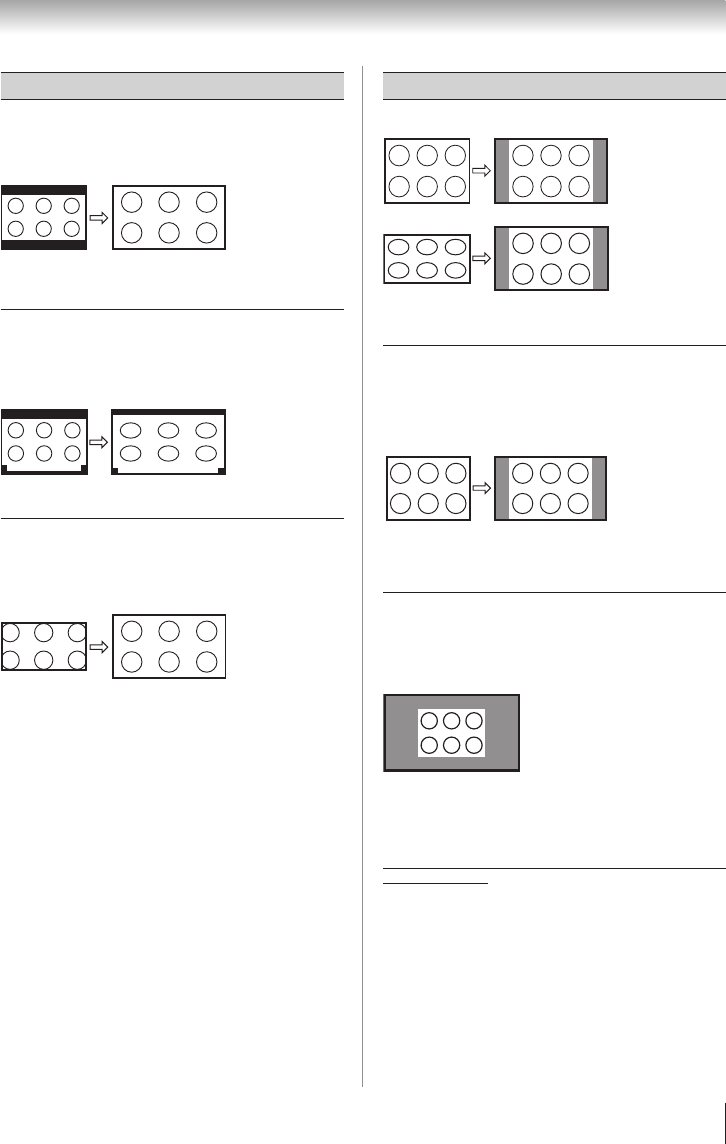
Chapter 6: Using the TV’s features
33
Picture Size
TheaterWide 2
(for letter box programs)
A B C D E F G - - - - - - - - - - - - - - - -
The top and bottom edges of the picture may be
hidden*.
TheaterWide 3
(for letter box programs with
subtitles)
A B C D E F G - - - - - - - - - - - - - - - -
A B C D E F G - - - - - - - - - - - - - - - - - - - - - - - - - -
The top and bottom edges are hidden*.
Native
(
for 480i (HDMI), 480p (HDMI), 720p,
1080i, and 1080p signal programs)
•
If receiving a 480i (HDMI), 480p (HDMI), 720p,
1080i, or 1080p signal program, Native mode
scales the video to display the entire picture within
the borders of the screen (i.e. no overscanning).
•
This is especially useful for external HD sources
such as DVHS movies, or PC graphics.
Note:
•
This mode is supported only for HDMI
(1080p,1080i, 720p, 480p, and 480i), ColorStream
(1080i and 720p), and ANT/ CABLE (digital)
inputs (1080p,1080i, and 720p).
•
Depending on the input signals, the border of
the picture may be hidden, displayed in black,
or noisy.
Picture Size
4:3
Some program formats will display with sidebars
and/or bars at the top and bottom.
Normal
(for VGA, SVGA, XGA, WXGA, and
SXGA sources and Photo files)
“Normal” is a non-stretched display. Some input
signal formats will display with sidebars and/or bars
at the top and bottom.
Dot by Dot
(for VGA, SVGA, XGA, WXGA, and
SXGA sources only)
The “Dot by Dot” picture is non-scaling display.
Depending on the input signal formats, picture is
displayed with sidebars and/or bars at the top and
bottom. (Example: VGA input source)
*
To view the hidden areas (such as subtitles or
captions), see below “Scrolling the TheaterWide
®
picture”.
(continued)


















